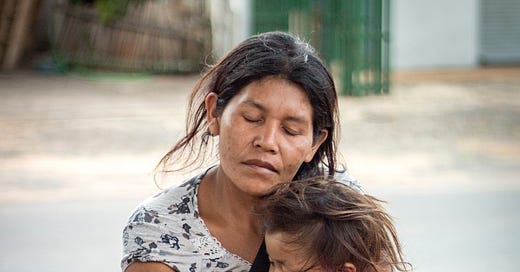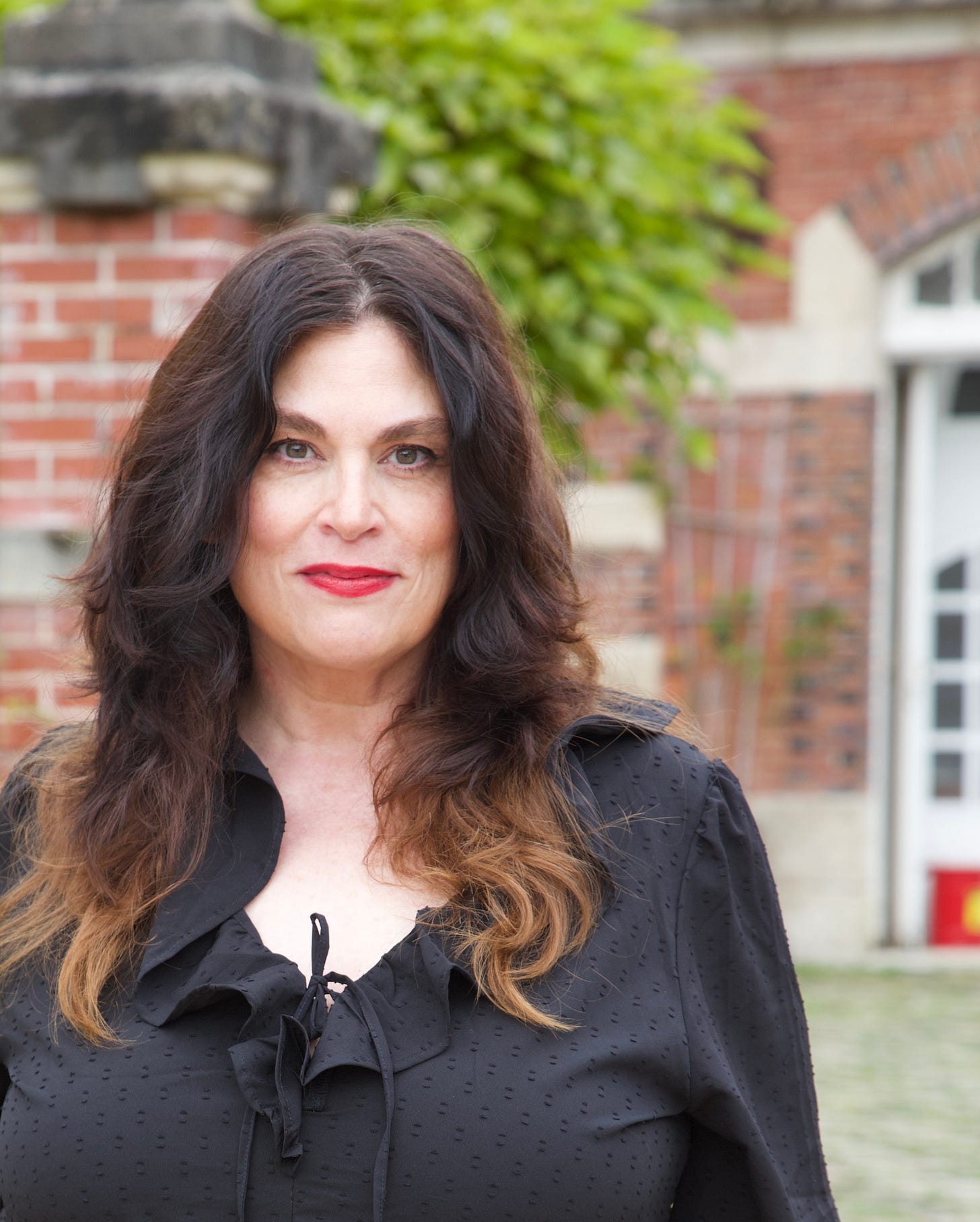Part Four: Who is Responsible for an Unwanted Pregnancy and How Much Does it Actually Cost to Raise a Child Today?
Part four of five of The Most Compelling Abortion Argument That Neither Side Is Discussing: What Happens to the Unwanted and How Does that Impact Us All?
Photo by ia huh on Unsplash
Disclaimer: this is for mature audiences only, which includes mature children who are old enough to procreate.
Also, I use inclusive language in regard to gender identification as much as possible. Please allow for understanding that if/when I miss the mark it’s unintentional or to avoid a convoluted sentence. I define men and women by how they define themselves, however, that becomes challenging in discussing certain topics specific to XY or XX chromosomes. Please bear with me as I’m doing my best to navigate these waters in both a socially and politically sensitive, yet also accurate way. Thank you.
Part Four: Who is Responsible for an Unwanted Pregnancy and How Much Does it Actually Cost to Raise a Child Today?
Just as women get blamed for how they dressed if they are raped, so too they are often blamed for having sex that results in unwanted pregnancy but there’s no pregnancy without sperm. The withheld deposit of chromosomal XY ejaculation has the power to make all pregnancies 100% preventable.
A political YouTube comic who went from amusing satire of the spiritual path he followed, to disturbing, divisive political mockery, blamed women who had abortions for having sex in the first place. Obliviousness fails to acknowledge that sex with a woman is possible without seamen, but pregnancy is not; so, while it takes two to tango, if any single party is responsible for an unwanted pregnancy, it’s not the woman with the XX Chromosomes. Women can’t get themselves pregnant on their own.
The red-headed YouTuber accused women of having sex as a need to fill a psychological void created from insecurities—a tired trope used by many before him. Presuming women can’t or don’t choose to have sex purely for physical gratification is misogynistic ignorance. Both men, women, and those who identify beyond the binary, engage in sex for a variety of reasons that span pleasure to procreation. Some men, women, and those who identify beyond the binary, have sex as a form of conquest, attention, recreation, or power. Some have sex to feel connected, wanted, valued, and worthy. Sex is often medically recommended for a healthy lifestyle. Whether sex is used to relieve stress, to “make love,” or to bond, the act of sex is a natural part of life and not relegated to procreation. Expecting women to not have sex unless it’s for procreation is unrealistic, dystopian, and ridiculous.
If we want fewer abortions associated with unwanted pregnancies, let’s get candid—sex is more than intercourse. If we can openly discuss abortions we shouldn’t get squeamish talking openly about sex. The female orgasm most often occurs outside the vaginal canal through clitoral stimulation which is a part of the vulva. Penetration is optional in consensual sex—and not required for either the man or woman to achieve climax—these are neglected facts and considerations in most sex-education classes. Until and unless both parties consent to creating a child and have the means to do so, the one with the penis can deposit their seaman outside of the one with a uterus (i.e., in hand, on a designated surface, or some other agreed upon place).
Sure, it would behoove all humans to have stronger discernment and boundaries around who and how they have sex, if their goal is to avoid unwanted pregnancy. Nevertheless, what consenting adults do in the privacy of their boudoir is their business. No woman deserves to be blamed for an unwanted pregnancy - period- but especially one she did not physically create on her own. Furthermore, no woman who has had an abortion has to justify it with a story of why she had it. She has a right to have dominion over her own body and should never have to provide an excuse or reason for her personal choice to have an abortion. Unintended pregnancies happen, even with the best laid plans—pun intended. Birth control pills, condoms, and IUDs can all fail. That doesn’t mean women should be forced to have unwanted pregnancies leading to unwanted children they may not be able to afford. Throwing fire after fire engulfs everyone in flames.
The Vast Majority of Abortions Are Due to Economic Factors.
The opposition likes to point to economic factors in regard to abortion as elective considerations; but when the cost of living is greater than the living wage, all pregnancies (wanted or unwanted) can lead to an undue financial burden. Many people can barely afford to take care of themselves these days, let alone labor the cost of raising a child. There’s nothing elective about trying to survive.
The United States Department of Agriculture estimates that the average cost of raising a child from birth to 18, for a median-income family in the year 2022, is $284,570; and if you live in New York, you’re looking at half a million dollars per child. This does not include college or birth. My child’s birth, even with insurance that covered 80%, still cost us $60,000 out of pocket; and her college expenses are estimated to be a minimum of $50,000, even with grants and scholarships.
My child is priceless to me, and I’ll happily pay whatever I can to provide her with the best life possible. She is my greatest joy, and I can’t imagine my life without her. Nevertheless, I intentionally waited until the last possible minute I could to biologically have a child, in part because of the baseline expense I could not afford. I do not regret waiting to have my child. Children who are born to parents who are perpetually in survival mode can end up being abandoned, neglected, or abused. I believe I am a better and more patient mother, than I would have been, for waiting, planning, and preparing for my child, but not everyone has that luxury. Not only do children cost more than anyone prepares you for, but there can also be unexpected medical expenses we can’t always foresee.
Give birth to a child with life long medical needs, like severe autism, and according to the organization, Autism Speaks, you can expect to pay upwards of two million dollars for the lifetime cost; and one in every forty-four children is diagnosed with autism spectrum disorder. I am not by any means suggesting that autism is a reason to have an abortion; rather that finances are a consideration when giving birth, especially to a child with special needs. No one wants to see their child suffer and not have the medical care they need.
How much money would a woman have to make to raise an unwanted child, likely on her own, and pay for childcare for that child so that she could work to make money? It’s much more than is typically possible, especially taking into consideration income inequality, the lack of communal support, the way giving birth can disrupt a woman’s career trajectory and education, and the fact that we are living in a time period in which the living wage does not cover the cost of living for many Americans.
Communal Death
Many American families are fractured geographically, financially, personally, or physically. Grandparents, aunts, uncles, and cousins who used to be able to help raise a new member of the family are often too overwhelmed with their own lives: chronic health conditions, financial constraints, busy schedules, or geographical distances that limit their resources and abilities to help raise a child. Both the burdens and the joys often fall to the mother alone.
When Women Can’t Afford to Raise a Child
They turn to social services like welfare.* In the midst of one of the greatest housing shortages and homeless crises in America, one in every six children lives in abject poverty and goes to sleep hungry. Living with food and housing insecurity has lasting effects physically, academically, and psychologically. Without the right to abortion, the cycle of poverty is more likely to be perpetuated than it is to be broken. Women who choose to have abortions for economic reasons are often making the best choice possible for all concerned. It may or may not be a choice filled with regret; many of the most important choices we make are filled with uncertainty and some will inevitably be filled with remorse. I’ve met an equal number of women who have confided in me regret for the pregnancies they ended, and regret for the pregnancies they did not end.
Adoption
If you think loving adoptive parents are waiting in the wings to raise every unwanted child that results from an unwanted pregnancy, think again. The Guttmacher Institute reports that the majority of abortions occur in black and brown populations, where adoption rates are historically lower, which leads us right back to where this story began—the Children’s Institute and Re-Homing programs. When we take away a woman’s reproductive freedom, we may bring forth legions of children who have no freedoms and who land in harmful re-homing programs.
*For more information of the great divide between the haves and the have nots, please read or listen to the Sage Words podcast episode: Wealth: Higher Income Than We Deserve for Opportunities We’re Lucky Enough to Have. (April, 2022)
This concludes Part Four: Who is Responsible for an Unwanted Pregnancy and How Much Does it Actually Cost to Raise a Child Today?
In Part Five, the conclusion of The Most Compelling Abortion Argument That Neither Side Is Discussing: What Happens to the Unwanted and How Does that Impact Us All? the truth is revealed about what ultimately happens to unwanted children and the evidence of sex trafficking through re-homing programs.
Sage Justice is intensely sincere. Balancing wisdom and humor she most often writes deeply personal solution based pieces about the enduring virtues that connect us all: love and healing. She is an award-winning playwright and critically acclaimed performing artist who has appeared on stages from Madison Square Garden in New York City, to The Comedy Store in Hollywood, California. Ms. Justice is the author of Sage Words FREEDOM Book One, an activist, a member of the Screen Actors Guild and an alumna Artist-In-Residence of Chateau Orquevaux, France. She is a co-founder of The Unity Project which fuses activism with art, to educate and inspire, with a special emphasis on community engagement to end homelessness. She has a series of short reels about living with the rare genetic disorder, Vascular Ehlers-Danlos Syndrome that you can find in a highlight reel on her Instagram page @SageWords202
Photo By Margot Hartford





